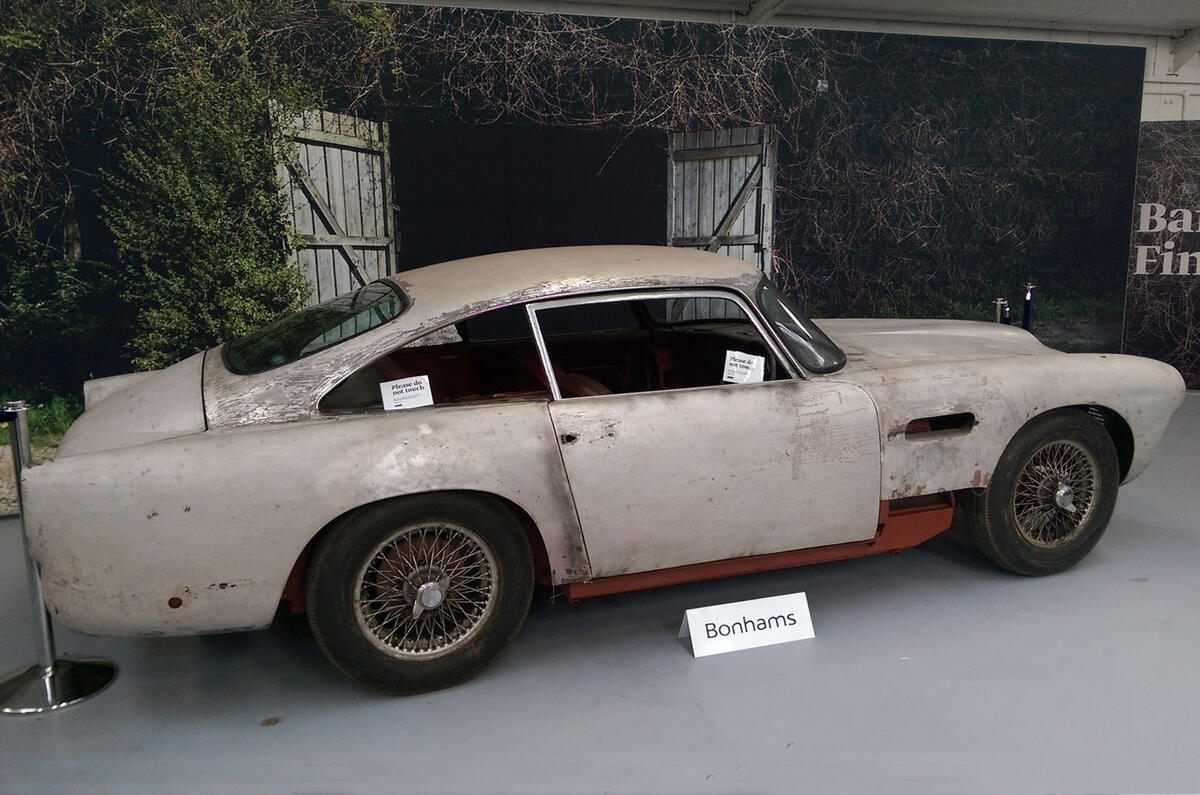Two hundred and seventy thousand pounds. I was almost aghast. That was the price at which the hammer fell on a dilapidated 1962 Aston Martin DB4 Series III Sports Saloon.
Once the dust had settled and the auction fees had been totted up, this Aston – which hadn’t moved for 30 years – set its buyer back a total of £309,900. For a moment I thought someone had slipped some bid-inducing drug into the air-con system. After all, this DB4 was going to require tens, if not hundreds of thousands of pounds’ worth of restoration.
I understood the appeal of barn finds – a valuable classic, a rare commodity, lost for decades and then returned to the world - but paying so much for one seemed a false enterprise, even in this day and age of rapidly spiralling prices. The car, which was part of the annual Aston Martin Works sale undertaken by Bonhams, wasn’t even complete. There were some factors in its favour, however: it had a rebuilt engine that reputedly ran very well and, more prominently, the car was claimed to be otherwise totally original.
Still, spending so much on an unknown quantity seemed like a questionable move. Surely a fine, working example was the better bet? What happened next, though, made the seemingly illogical hammer prices entirely justifiable. Up came a left-hand-drive DB4 Series II, in 'Deep Carriage Green', which was in stunning condition following a complete restoration by the Aston Martin Works Service. I had no doubt, given the attention paid to these cars, that it was finished to a higher standard than it was when new.
The phones and auction hall flared into life and the bids quickly escalated to £580,000. It wasn’t quite enough to secure a sale – it had a lower estimate of £650,000 – but it demonstrated the going rate for a car of its kind. If it had been let go at the hammer price, with fees it would have set the buyer back some £665,000. Either way, at £580,000, the restored car commanded a premium of £310,000 over the barn-find DB4.
Regardless of how you cut it, that’s going to cover the costs of seriously high-quality restoration. It would almost cover the cost of an in-house Aston Martin restoration, too, and by the time it had been finished the car’s value would probably have risen yet again to cover the difference. You'd also end up with a car built exactly to your specifications and one that, if you held onto it for a little longer, would no doubt command a price far in excess of what it owed you.



























Join the debate
Add your comment
It's taken years of ageing to look like that...
I'm not suggesting a lowered "Rat Look" Aston (though, buyers car, buyers money, they car do as they please with it), I just prefer usable, patina'd cars to trailer queens.
Pop!
@ Jason Recliner
Aston Martins (DB series)are indeed making big money restored, but usually only if it is a ground up resto with one of the big players in the AM restoration world.
DB series are notoriously very expensive to restore with such people not least because of the Superleggera bodywork.
Even with a punchy market you could struggle to break even if you are paying such inflated 'Barn find' prices....and then as Jason points out- you are relying on a rising market to make your investment right. High risk? You bet!
Anybody else remember the late '80s?
If you are a speculator, you